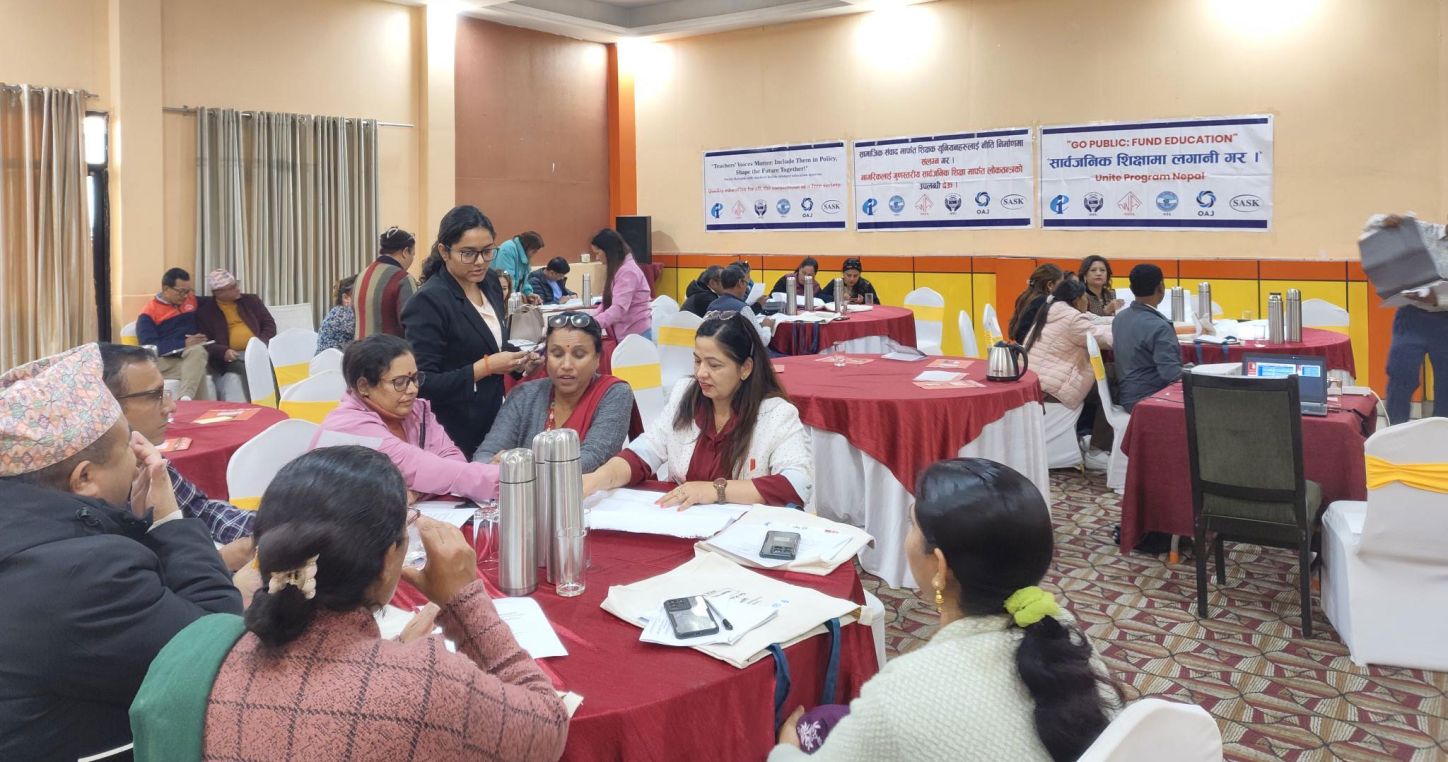Adolescents Face Cancer’s Impact on Identity, Sexuality – BIOENGINEER.ORG

Report on the Impact of Cancer on Adolescent and Young Adult Sexual and Reproductive Health in the Context of Sustainable Development Goals
Introduction and Research Synopsis
A recent study published in BMC Cancer investigates the impact of cancer on the sexual and reproductive health (SRH) of adolescent and young adult (AYA) patients, aged 15-39. This report analyzes the study’s findings and implications through the framework of the United Nations Sustainable Development Goals (SDGs), highlighting critical intersections with health, equality, and institutional integrity. The research employed a patient-oriented methodology, utilizing serial focus groups with 48 diverse Canadian participants to explore the lived experiences of AYA patients. This approach aligns with the principles of inclusive and participatory development central to the 2030 Agenda for Sustainable Development.
Advancing SDG 3: Good Health and Well-being
The study’s core findings directly address the targets of SDG 3, which aims to ensure healthy lives and promote well-being for all at all ages. The research reveals significant gaps in care that compromise the holistic health of AYA cancer patients, extending beyond clinical treatment to encompass mental and social well-being.
Key Health and Well-being Challenges Identified
- Compromised Mental and Emotional Health: Participants reported profound internal challenges, including anxiety over fertility, diminished body image, and feelings of inadequacy, directly impacting mental well-being, a key component of SDG Target 3.4.
- Inadequate Access to SRH Services: The study highlights that discussions around SRH are often limited to fertility preservation, neglecting broader issues of sexual function, intimacy, and identity. This points to a failure to meet SDG Target 3.7, which calls for universal access to sexual and reproductive health-care services.
- Physical Side Effects: Treatment-related side effects such as hormonal changes, neuropathy, and surgical alterations directly impair sexual health and reproductive confidence, underscoring the need for comprehensive survivorship care models that promote long-term well-being.
Promoting SDG 5 and SDG 10: Gender Equality and Reduced Inequalities
A significant contribution of the research is its focus on intersectionality, revealing how cancer disproportionately affects marginalized populations. These findings provide a clear mandate for action under SDG 5 (Achieve gender equality and empower all women and girls) and SDG 10 (Reduce inequality within and among countries).
Addressing Systemic Inequalities in Cancer Care
- Gender Identity and Norms: The study found that heteronormative and cisnormative biases within healthcare systems create significant barriers for patients. This challenges progress toward SDG 5 by failing to provide affirming and appropriate care for all genders, including cis-gender women, nonbinary, and gender-fluid individuals.
- Intersectional Disparities: The research explicitly notes the compounded marginalization faced by 2SLGBTQIA+ and racialized (BIPOC) participants. These groups experience greater isolation and difficulty accessing affirming care, highlighting a critical need to address the health disparities targeted by SDG 10.
- Social Stigma and Isolation: Inadequate community support and societal stigma were identified as major barriers to navigating SRH post-diagnosis, further entrenching the inequalities that SDG 10 seeks to dismantle.
A Framework for Institutional Reform: Aligning with SDG 16 and SDG 17
The study’s methodology and recommendations offer a model for building more effective, accountable, and inclusive institutions, as envisioned in SDG 16 (Peace, Justice and Strong Institutions), and fostering the collaborations essential to SDG 17 (Partnerships for the Goals).
Recommendations for Sustainable and Inclusive Healthcare Systems
- Adopt Person-Centered Care Models: Healthcare institutions must move beyond a purely clinical focus to a biopsychosocial framework that integrates mental, emotional, and social health, directly supporting the well-being targets of SDG 3.
- Implement Inclusive and Participatory Practices: The use of Patient Research Partners (PRPs) demonstrates a commitment to responsive and participatory decision-making (SDG 16.7). This co-creation model should be embedded in the design and delivery of all AYA cancer support programs to ensure they are relevant and trusted.
- Foster Multi-Stakeholder Partnerships: Achieving holistic care requires collaboration between clinicians, researchers, support organizations, and policymakers. Such partnerships (SDG 17) are essential for creating specialized, culturally sensitive services that address the full spectrum of patient needs.
- Invest in Training and Education: To dismantle systemic biases, healthcare providers require training to address heteronormative assumptions and the unique needs of diverse populations, thereby advancing both SDG 5 and SDG 10.
Analysis of Sustainable Development Goals in the Article
1. Which SDGs are addressed or connected to the issues highlighted in the article?
- SDG 3: Good Health and Well-being: The article is fundamentally about health. It explores the physical, mental, and social well-being of adolescent and young adult (AYA) cancer patients, focusing specifically on the under-addressed areas of sexual and reproductive health. It calls for improved quality of life, holistic wellness, and better healthcare models that address both the disease and its profound impact on patients’ lives.
- SDG 5: Gender Equality: The article directly addresses gender by including diverse participants such as cis-gender women, cis-gender men, nonbinary, and gender-fluid individuals. It highlights the tension with “heteronormative expectations” and calls for dismantling “heteronormative and cisnormative biases” in healthcare to provide affirming care for all, particularly for members of the 2SLGBTQIA+ community.
- SDG 10: Reduced Inequalities: The article points to significant inequalities in healthcare. It identifies the AYA demographic as a group “often caught between pediatric and adult oncology services.” Furthermore, it emphasizes the “intersecting marginalization faced by LGBTQIA+ and racialized participants,” which creates “lingering health disparities” and complicates access to affirming care.
- SDG 16: Peace, Justice and Strong Institutions: The article advocates for more inclusive and responsive institutions, such as cancer centers and research bodies. The study’s methodology, which involved “patient research partners (PRPs)” in co-creating the research, is a prime example of participatory and inclusive decision-making. The article calls for this model to be adopted in program design to ensure institutions are responsive to patient needs.
2. What specific targets under those SDGs can be identified based on the article’s content?
-
SDG 3: Good Health and Well-being
- Target 3.4: “By 2030, reduce by one third premature mortality from non-communicable diseases through prevention and treatment and promote mental health and well-being.” The article’s focus on cancer (a non-communicable disease) and its profound impact on mental and emotional well-being—including “fertility anxieties, body image, and gender identity” issues, “feelings of alienation,” and “grief”—directly relates to this target’s call to promote mental health and well-being alongside treatment.
- Target 3.7: “By 2030, ensure universal access to sexual and reproductive health-care services…” The central theme of the article is the gap in care related to sexual and reproductive health for AYA cancer patients. It explicitly calls for clinicians to provide “comprehensive, affirming approaches to sexual and reproductive health counseling” and for institutions to create “specialized services” that go beyond just fertility preservation.
-
SDG 5: Gender Equality
- Target 5.6: “Ensure universal access to sexual and reproductive health and reproductive rights…” This target is relevant as the article advocates for patient agency and person-centered care that respects individual identity. It highlights the need to dismantle “heteronormative and cisnormative biases” to ensure that all individuals, including nonbinary, gender-fluid, and 2SLGBTQIA+ patients, have access to care that affirms their identity and rights concerning their sexual and reproductive health.
-
SDG 10: Reduced Inequalities
- Target 10.2: “By 2030, empower and promote the social, economic and political inclusion of all, irrespective of age, sex, disability, race, ethnicity…” The article champions the inclusion of marginalized groups. It specifically mentions the “intersecting marginalization faced by LGBTQIA+ and racialized participants” and the neglect of the AYA (age-specific) demographic. The study’s inclusive design, featuring diverse participants, and its call for culturally sensitive interventions aim to reduce these inequalities.
- Target 10.3: “Ensure equal opportunity and reduce inequalities of outcome…” The article identifies “lingering health disparities” as an inequality of outcome. It calls for action to bridge these care gaps by training healthcare providers and creating specialized support networks, thereby promoting equal opportunity for holistic health and well-being for all AYA patients, regardless of their background or identity.
-
SDG 16: Peace, Justice and Strong Institutions
- Target 16.7: “Ensure responsive, inclusive, participatory and representative decision-making at all levels.” The study’s methodology is a direct application of this target. By using “patient research partners (PRPs) who not only guided conversations but also helped shape the research questions themselves,” the research model demonstrates participatory decision-making. The article recommends this “collaborative ethos” for designing clinical programs to make institutions more responsive and inclusive.
3. Are there any indicators mentioned or implied in the article that can be used to measure progress towards the identified targets?
-
For Target 3.4 (Promote mental health and well-being):
- An implied indicator is the measurement of psychosocial outcomes and quality of life among AYA cancer survivors. The article describes patients’ feelings of being “enough,” alienation, and grief, suggesting that progress could be measured by tracking improvements in these areas through longitudinal studies and patient-reported outcome surveys.
-
For Target 3.7 & 5.6 (Universal access to sexual and reproductive health care):
- Implied indicators include the proportion of cancer centers offering “specialized services” for AYA sexual and reproductive health and the proportion of AYA patients who report receiving “comprehensive, affirming approaches to sexual and reproductive health counseling” that go beyond fertility preservation. Another indicator could be the number of healthcare providers who have received training to “dismantle heteronormative and cisnormative biases.”
-
For Target 10.2 & 10.3 (Reduce inequalities and ensure inclusion):
- An implied indicator is the diversity of participants in cancer research and clinical programs. Progress could be measured by the proportion of studies and services that successfully recruit and retain participants from diverse backgrounds, including “cis-gender women, cis-gender men, nonbinary and gender-fluid individuals,” “members of the 2SLGBTQIA+ community,” and “Black, Indigenous, and People of Colour (BIPOC),” as was done in this study.
-
For Target 16.7 (Responsive and participatory institutions):
- A clear indicator is the adoption of co-creation models in research and healthcare. Progress can be measured by the number or proportion of research studies and clinical programs that formally “incorporate PRPs (Patient Research Partners) in program design and delivery,” as advocated in the article.
4. Table of SDGs, Targets, and Indicators
| SDGs | Targets | Indicators (Implied from the article) |
|---|---|---|
| SDG 3: Good Health and Well-being |
3.4: Promote mental health and well-being for those with non-communicable diseases.
3.7: Ensure universal access to sexual and reproductive health-care services. |
– Measurement of psychosocial outcomes and quality of life in AYA cancer patients (e.g., through surveys on self-worth, alienation, grief).
– Proportion of cancer centers with specialized AYA sexual/reproductive health services; Percentage of AYA patients receiving comprehensive counseling. |
| SDG 5: Gender Equality | 5.6: Ensure universal access to sexual and reproductive health and reproductive rights. | – Number of healthcare providers trained to dismantle heteronormative/cisnormative biases; Availability of affirming care for LGBTQIA+ patients. |
| SDG 10: Reduced Inequalities |
10.2: Empower and promote the social inclusion of all, irrespective of age, sex, race, etc.
10.3: Ensure equal opportunity and reduce inequalities of outcome. |
– Proportion of research and healthcare programs that include diverse participants (by age, gender identity, race).
– Availability of culturally sensitive interventions designed to reduce health disparities for marginalized AYA groups. |
| SDG 16: Peace, Justice and Strong Institutions | 16.7: Ensure responsive, inclusive, participatory and representative decision-making. | – Proportion of cancer research projects and clinical programs that formally incorporate Patient Research Partners (PRPs) in their design and delivery. |
Source: bioengineer.org

What is Your Reaction?
 Like
0
Like
0
 Dislike
0
Dislike
0
 Love
0
Love
0
 Funny
0
Funny
0
 Angry
0
Angry
0
 Sad
0
Sad
0
 Wow
0
Wow
0














































































